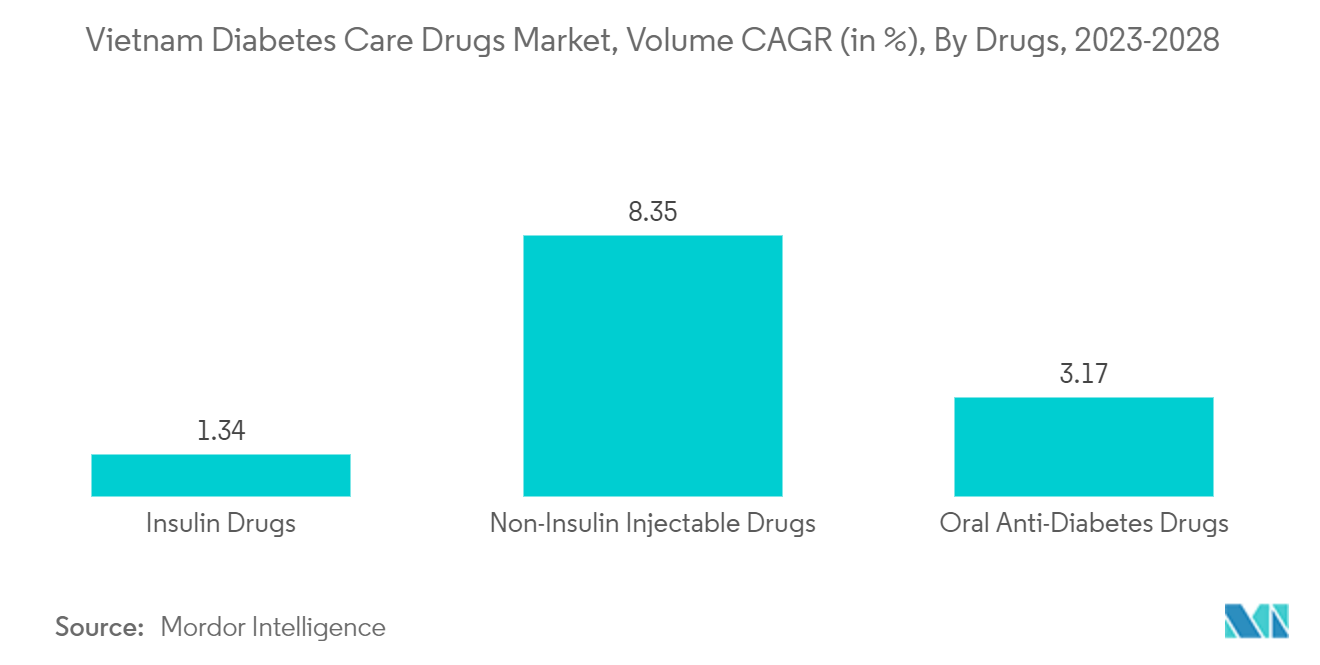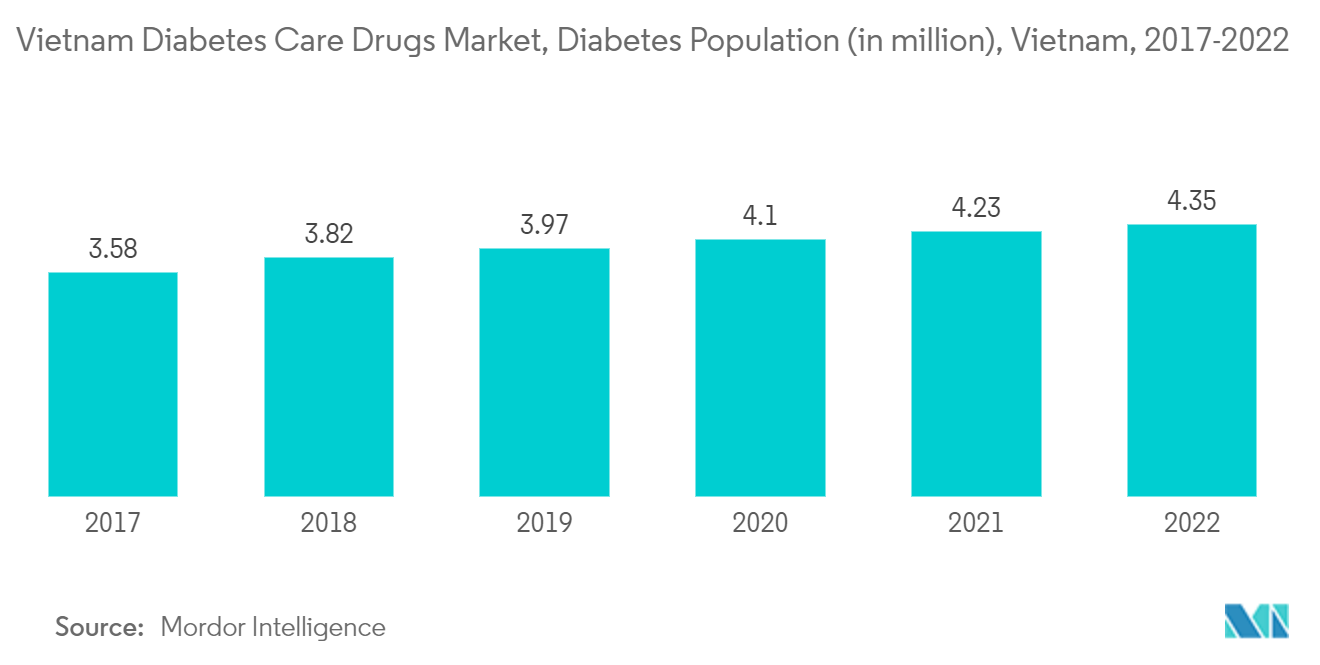Market Trends of Vietnam Diabetes Care Drugs Industry
Oral-Anti Diabetes Drugs is Having the Highest Market Share in the Current Year.
The oral anti-diabetic drugs segment is expected to increase, registering a CAGR of over 3.7% during the forecast period, mainly due to the demand from the diabetes population, which was more than 4.2 million by the end of the current year.
Health insurance was implemented in Vietnam over a decade ago, but coverage remains limited. Vietnam is a low- to middle-income country, with a GDP per capita of about USD 4310. As a result, the cost of diabetes treatment exerts major pressure on a patient's family budget. Vietnam is a low- to middle-income country, with a GDP per capita of about USD 4310. As a result, the cost of diabetes treatment exerts major pressure on a patient's family budget. Diabetes medication is affordable in HCMC as compared to the cost of treating other chronic diseases such as infectious, cardiovascular, and renal issues. The country's elderly population has put a strain on the healthcare system as well as social security services and regulations. As a result, the government must adopt new policy initiatives to lessen the burden of diabetes treatment and healthcare expenditures.
Vietnam is aiming to achieve universal health insurance coverage and has decentralized the management of health to lower levels of the country's administrative structure.
Each institution in Vietnam uses the Ministry of Health's guidelines for pricing different drugs to create their unique bids. Some of these costs were up to six times those found on the worldwide market. The purchase of branded drugs vs. generics influences facility spending in Vietnam and, hence, on the individual and/or the insurance system. Diabetes is recognized in Vietnam as a public health burden, and public health officials have taken steps to alleviate the burden. The diabetes burden in Vietnam is the outcome of several epidemiologic trends and factors. Diabetes has the potential to become an epidemic, imposing massive public health and economic burdens on Vietnam. Although the prevalence of diabetes in rural regions remains low, it is increasing. Diabetes is as common in large cities as it is in the rest of the Western world.
Through the Vietnam government's encouragement, the usage of management devices increased over the forecast period.

Increasing Diabetes population in Vietnam
Diabetes is one of the four main non-communicable diseases (NCDs), and its global incidence has increased substantially in recent years. Diabetes is increasing at a rate of roughly 6.23% per year in Vietnam, and it has become a severe health and economic burden for Vietnamese society. Economic growth and societal changes have an influence on disease patterns ranging from infectious illnesses to noncommunicable diseases, with diabetes being one of Vietnam's seven leading causes of death and disability. Obesity prevalence in Vietnam remains relatively low, despite significant increases over the last decade, notably in the last five years. There has been a significant shift in food patterns, which corresponds to changes in the obesity prevalence rate. In Vietnam, cigarette smoking is a major risk factor for diabetes. According to a new meta-analysis, cigarette smokers are 44% more likely to get diabetes than nonsmokers. Although cigarette smoking is common among Vietnamese males, the trend is downward. Diabetes prevalence rates are rising in correlation with changes in risk factors such as obesity and a Westernized food pattern. Diabetes is typically thought to be avoidable via lifestyle modifications such as good food and regular physical activity, although additional study is needed to support this hypothesis for the Vietnamese community.
In Vietnam, insulin and oral diabetic medications are subject to a 5% import tariff and a 5% VAT. Mark-ups across the supply chain raise the price in the public and private sectors for individuals without health insurance.
Thus, owing to the above factors, it is expected to drive market growth over the forecast period.


